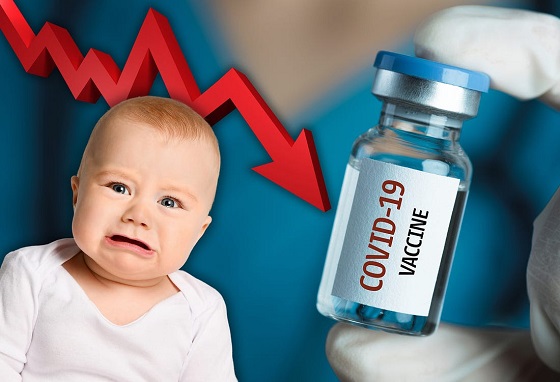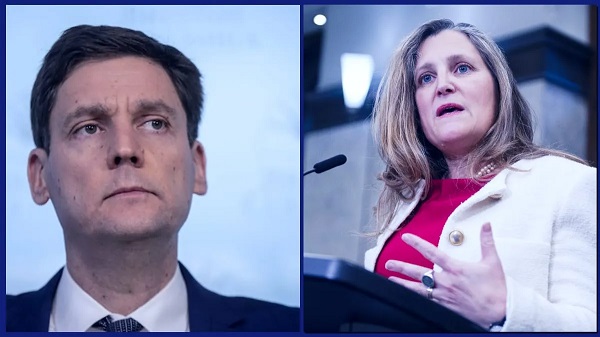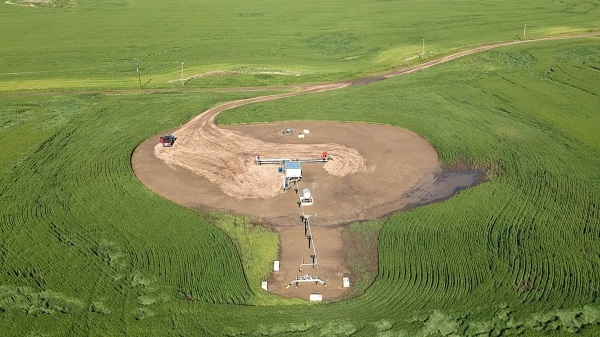Fraser Institute
Emperors of woke have no clothes and conservatives should say so

From the Frontier Centre for Public Policy
The major finding is that in Great Britain, Canada and the United States roughly one third of the population accept “woke” (progressive) views, while roughly two thirds reject those views.
However — and this is alarming — in all three countries that woke one-third controls all of the major institutions. The mainstream media, universities and civil service, for instance, are firmly controlled by the one-third woke.
Why do Conservatives go along with woke ideas, woke norms and above all woke people?
One of these days we’re going to be really sorry we didn’t stand up to this nonsense, when the proverbial little boy calls out that the emperor has no clothes. Men can be women? C’mon! You didn’t call that out at the time? Why not?
This is the question posed by Professor Eric Kaufman of England’s University of Buckingham. Kaufman, also an associate at the Ottawa-based Macdonald Laurier Institute, is a Canadian who has been living and teaching in England for the past 25 years. He has recently completed a survey on “wokeness.” (As reported here.) He was also interviewed by National Post’s rising star, Jamie Sarkonak.
Kaufman’s survey has important findings, particularly for Canada. The major finding is that in Great Britain, Canada and the United States roughly one third of the population accept “woke” (progressive) views, while roughly two thirds reject those views.
However — and this is alarming — in all three countries that woke one-third controls all of the major institutions. The mainstream media, universities and civil service, for instance, are firmly controlled by the one-third woke.
Rudi Dutschke’s long march through the institutions has arrived.
But even more concerning for Canadians should be Kaufman’s findings that pertain specifically to Canada.
That’s because he finds that while Great Britain’s Conservatives and America’s Republicans are ferociously pushing back against the extreme wokeness that is now so evident in all three countries, that is really not happening in Canada. Instead, Conservatives here have tended to knuckle under to the wokeness the Liberals so aggressively push. Any pushback has been extremely timid.
Why? How can that be? If Kaufman is right that at least two thirds of Canadians reject wokeism why is it that they have no one to represent their views?
- Is this the reason why Canada has now gained an international reputation as one of the most woke nations on earth?
- Where a Chief Justice actually feels comfortable about receiving no pushback when he claims that his Supreme Court is “the most progressive in the world”?
- And our prime minister is universally mocked as the wokest of the woke?
Does the timidity of the Conservatives on woke policies explain why the Canada we knew during the Harper and Chretien years seems to be slipping away from us?
If Kaufman’s findings are accurate, and our Conservatives are indeed submitting to woke policies — instead of representing the two thirds of Canadians who don’t want those policies — we should ask why.
Part of the reason would certainly be that the Liberals and the NDP have at every national election dishonestly attempted to use ‘socially conservative’ issues against all conservative parties — Reform, Alliance or today’s Conservative Party of Canada.
These progressive attacks were entirely spurious: conservatives have consistently stayed away from any discussion of limiting abortion access, or reversing gay marriage rights. Yet, the suggestion of a secret agenda of radical reforms is trotted out at every election, and in some eastern swing ridings appears to have been effective in keeping seats out of conservative hands.
Perhaps not surprisingly then, conservatives have consistently preferred to concentrate on bread and butter issues, and avoid the culture wars now raging.
However, with an increasingly assertive left insistent on imposing a woke agenda — even to the extent of approving a 50-year-old man sharing a locker room with teenage age girls, this preference to stay out of the fray is no longer available to them.
The example of Scott Moe’s introduction of his parents’ rights legislation is a clear sign that provincial conservatives realize that they must enter the fray. So is Alberta Premier Danielle Smith’s statement that in Alberta, sex-change operations on children under 18 years of age will not be allowed. (A decision that surprised many, given the premier’s known libertarian predilections.)
In Ontario, education minister Stephen Lecce said last year that “parents must be fully involved and fully aware of what’s happening in the life of their children.” And let’s not forget that all this started in New Brunswick, when Premier Blaine Higgs made what looks now to be a modest proposal, that children under 16 would need parental permission to change their gender at school by switching names and pronouns.
In other words, provincial politicians get it. (At last.) Federal Conservatives should go do likewise.
So what should they say?
Here are three possible responses to woke policies — on the trans issue, indigenous issues and immigration.
There is no official list of woke beliefs, but probably the most extreme is the trans issue. Woke politicians state as a fact that a man who identifies as a woman is in fact a woman. Although this claim is quite astounding to the non-woke — who know it to be untrue — the woke accept it as gospel. Prime Minister Trudeau himself famously tweeted, “A trans woman is a woman.”
If tweets were just words in the blogosphere this wouldn’t matter. However, when the nation’s leader says the words they have consequences. So, Canada now has men in women’s prisons, men in women’s sports and most alarmingly — children having body parts removed and being administered life-altering drugs — all based on this single nonsensical woke belief that men can become women by saying so.
The Conservatives should directly confront this dangerous nonsense. Obviously, they should craft their message in measured tones. But this can be easily accomplished, when the woke belief they are correcting is so obviously wrong.
Here is an example of a completely factual, scientifically accurate and measured statement that would probably win the approval of — if Kaufman is right — two thirds of Canadians: “A trans woman is not a woman. Conservatives respect trans people and respect their right to live their lives as they choose. However, that does not include their admission into women’s only places, such as crisis centres and jails or entry into women’s sports.”
The indigenous issue is Canada’s version of wokeism’s central belief — namely critical race theory — we see playing out to the south of us.
This is the woke belief that race is all important; that any differences and disparities between races is the result of systemic racism; and that governments must aggressively erase all such differences by the use of affirmative action type policies.
For the one third it has completely displaced the Martin Luther King “content of character” philosophy that has been gospel with the two thirds for more than half a century.
Canada’s woke version regards all indigenous Canadians as being completely different from other Canadians. According to this eugenics-like view anyone born to indigenous parents, or even partly indigenous parents, has some innate ecological awareness and abilities that non-indigenous people lack. They also — uniquely among every other racial or ethnic group on the planet — always tell the truth. Their claims must be taken as the truth.
Professor Hymie Rubenstein coins the term “indigenous exceptionalism” in From Truth Comes Reconciliation to describe this unusual woke belief. The most extreme example of this woke indigenous belief can be seen in the now three-year-old claim that 215 indigenous children were killed under sinister circumstances at the Kamloops Indian Residential School and then secretly buried by the priests and nuns who had supposedly killed them.
To make this claim even more bizarre it was claimed that children “as young as six” were forced to dig the graves.
Apart from a radar report showing soil disturbances that could just as easily be tree roots as graves, this baseless claim was not only taken seriously by our woke government, but actively promoted. Not only did the federal government lower flags for six months, they promised $320 million to any other indigenous communities who wanted to make similar baseless claims. Of course, many quickly did.
These “murder and secret burial” stories followed years of steadily escalating exaggeration of the harm done at residential schools. While there is no doubt that many children had bad experiences at residential schools, there had previously been a recognition that many children had received educations there that would otherwise have been denied to them. However, the stories of horror were ramped up, bit by bit, until many Canadians were ready to accept the preposterous Kamloops claim and the others that followed like clockwork after the Liberals incentivised them with the $320,000,000.
By now, most of the two thirds probably realize that they haven’t been told the truth by the Trudeau government or the mainstream media. The Conservatives need not be so afraid of being called “anti-indigenous” or “anti-reconciliation” when addressing this topic. Conservative opposition leader Pierre Pollievre made a good start when he said, “Canadians deserve to know the truth,“ and stressed the need for historical accuracy.
However, he then went on to pander embarrassingly to the woke view, using their language about the “horror” of residential school. That is not historical accuracy at all.
Here is the kind of thing Conservatives should say about residential schools:
“There is no doubt that many indigenous children were harmed at residential schools. They have been compensated and they deserve every penny of that compensation. There is also no doubt that there were some bad apples who taught and worked at the institutions. However, many indigenous children received educations that would otherwise have been denied to them. And the great majority of the priests, nuns, ministers and employees at the school were decent people who did their jobs honestly and well. That too should be recognized.”
Finally, and probably the most important issue of all — immigration. The woke view, as articulated by the PM in the earliest days of his new administration is that Canada is a post-national nation. No one seemed to understand the implications of what he was saying — possibly including the PM.
But when he tweeted out that Canada was open to anyone who wanted to come the implications started to become clear: a “post national” state doesn’t have borders… Anyone is welcome to simply walk in.
This is a fundamental belief of the woke. It is also an absolutely ruinous idea for any nation that wants to continue functioning. We see today how this woke no-borders idea is playing out in America. Our cold winters save us from the huge influxes seen there, but the millions coming to Canada are making houses unaffordable anyway and putting enormous pressure on services for Canadians and new immigrants alike.
Conservatives should not be afraid to call the woke “no borders, unrestricted immigration policy” crazy, because that is what it is.
Here’s a possible talking point they could use:
“Canada is a nation of immigrants. We have always needed immigrants, and we always will. We welcome new immigrants from all parts of the world. However, in the past few years too many have come too fast. The pressure on housing affordability and services are hurting both resident Canadians and new immigrants alike. For that reason in the first year after we take power there will be a one-year moratorium on new immigration. During that time we will both implement policies to make houses more affordable and determine what immigration numbers should be in the next decade. Canada is not a post-national state with no core identity. It is a nation with a distinct culture, an honourable history and it needs borders and a policy of controlled immigration to preserve that culture and identity.”
I think that the two thirds would welcome such an approach. And vote for it.
We don’t have to live with ignorance enthroned.
Brian Giesbrecht, retired judge, is a senior fellow at the Frontier Centre for Public Policy. First published here.
Business
National dental program likely more costly than advertised

From the Fraser Institute
By Matthew Lau
At the beginning of June, the Canadian Dental Care Plan expanded to include all eligible adults. To be eligible, you must: not have access to dental insurance, have filed your 2024 tax return in Canada, have an adjusted family net income under $90,000, and be a Canadian resident for tax purposes.
As a result, millions more Canadians will be able to access certain dental services at reduced—or no—out-of-pocket costs, as government shoves the costs onto the backs of taxpayers. The first half of the proposition, accessing services at reduced or no out-of-pocket costs, is always popular; the second half, paying higher taxes, is less so.
A Leger poll conducted in 2022 found 72 per cent of Canadians supported a national dental program for Canadians with family incomes up to $90,000—but when asked whether they would support the program if it’s paid for by an increase in the sales tax, support fell to 42 per cent. The taxpayer burden is considerable; when first announced two years ago, the estimated price tag was $13 billion over five years, and then $4.4 billion ongoing.
Already, there are signs the final cost to taxpayers will far exceed these estimates. Dr. Maneesh Jain, the immediate past-president of the Ontario Dental Association, has pointed out that according to Health Canada the average patient saved more than $850 in out-of-pocket costs in the program’s first year. However, the Trudeau government’s initial projections in the 2023 federal budget amounted to $280 per eligible Canadian per year.
Not all eligible Canadians will necessarily access dental services every year, but the massive gap between $850 and $280 suggests the initial price tag may well have understated taxpayer costs—a habit of the federal government, which over the past decade has routinely spent above its initial projections and consistently revises its spending estimates higher with each fiscal update.
To make matters worse there are also significant administrative costs. According to a story in Canadian Affairs, “Dental associations across Canada are flagging concerns with the plan’s structure and sustainability. They say the Canadian Dental Care Plan imposes significant administrative burdens on dentists, and that the majority of eligible patients are being denied care for complex dental treatments.”
Determining eligibility and coverage is a huge burden. Canadians must first apply through the government portal, then wait weeks for Sun Life (the insurer selected by the federal government) to confirm their eligibility and coverage. Unless dentists refuse to provide treatment until they have that confirmation, they or their staff must sometimes chase down patients after the fact for any co-pay or fees not covered.
Moreover, family income determines coverage eligibility, but even if patients are enrolled in the government program, dentists may not be able to access this information quickly. This leaves dentists in what Dr. Hans Herchen, president of the Alberta Dental Association, describes as the “very awkward spot” of having to verify their patients’ family income.
Dentists must also try to explain the program, which features high rejection rates, to patients. According to Dr. Anita Gartner, president of the British Columbia Dental Association, more than half of applications for complex treatment are rejected without explanation. This reduces trust in the government program.
Finally, the program creates “moral hazard” where people are encouraged to take riskier behaviour because they do not bear the full costs. For example, while we can significantly curtail tooth decay by diligent toothbrushing and flossing, people might be encouraged to neglect these activities if their dental services are paid by taxpayers instead of out-of-pocket. It’s a principle of basic economics that socializing costs will encourage people to incur higher costs than is really appropriate (see Canada’s health-care system).
At a projected ongoing cost of $4.4 billion to taxpayers, the newly expanded national dental program is already not cheap. Alas, not only may the true taxpayer cost be much higher than this initial projection, but like many other government initiatives, the dental program already seems to be more costly than initially advertised.
Business
Prairie provinces and Newfoundland and Labrador see largest increases in size of government
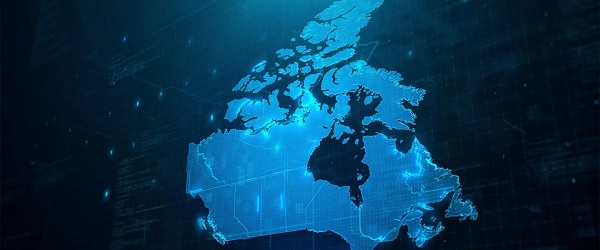
From the Fraser Institute
By Jake Fuss and Grady Munro
A recent study found that Canada has experienced one of the largest increases in the size of government of any advanced country over the last decade. But within Canada, which provinces have led the way?
The size of government refers to the extent to which resources within the economy are controlled and directed by the government, and has important implications for economic growth, living standards, and economic freedom—the degree to which people are allowed to make their own economic choices.
Too much of anything can be harmful, and this is certainly true regarding the size of government. When government grows too large it begins to take on roles and resources that are better left to the private sector. For example, rather than focusing on core functions like maintaining the rule of law or national defence, a government that has grown too large might begin subsidizing certain businesses and industries over others (i.e. corporate welfare) in order to pick winners and losers in the market. As a result, economic growth slows and living standards are lower than they otherwise would be.
One way to measure the size of government is by calculating total general government spending as a share of the economy (GDP). General government spending refers to spending by governments at all levels (federal, provincial, and municipal), and by measuring this as a share of gross domestic product (GDP) we can compare across jurisdictions of different sizes.
A recent study compared the size of government in Canada as a whole with that of 39 other advanced economies worldwide, and found that Canada experienced the second-largest increase in the size of government (as a share of the economy) from 2014 to 2024. In other words, since 2014, governments in Canada have expanded their role within the economy faster than governments in virtually every other advanced country worldwide—including all other countries within the Group of Seven (France, Germany, Italy, Japan, the United Kingdom, and the United States). Moreover, the study showed that Canada as a whole has exceeded the optimal size of government (estimated to fall between 24 and 32 per cent of GDP) at which a country can maximize their economic growth. Beyond that point, growth slows and is lower than it otherwise would be.
However, Canada is a decentralized country and provinces vary as to the extent to which governments direct overall economic activity. Using data from Statistics Canada, the following charts illustrate which provinces in Canada have the largest size of government and which have seen the largest increases since 2014.

The chart above shows total general government spending as a share of GDP for all ten provinces in 2023 (the latest year of available provincial data). The size of government in the provinces varies considerably, ranging from a high of 61.4 per cent in Nova Scotia to a low of 30.0 per cent in Alberta. There are geographical differences, as three Atlantic provinces (Nova Scotia, Prince Edward Island, and New Brunswick) have the largest governments while the three western-most provinces (Alberta, Saskatchewan, and British Columbia) have the smallest governments. However, as of 2023, all provinces except Alberta exceeded the optimal size of government—which again, is between 24 and 32 per cent of the economy.

To show which provinces have experienced the greatest increase in the size of government in recent years, the second chart shows the percentage point increase in total general government spending as a share of GDP from 2014 to 2023. It should be noted that this is measuring the expansion of the federal government’s role in the economy—which has been substantial nationwide—as well as growth in the respective provincial and municipal governments.
The increases in the size of government since 2014 are largest in four provinces: Newfoundland and Labrador (10.82 percentage points), Alberta (7.94 percentage points), Saskatchewan (7.31 percentage points), and Manitoba (7.17 percentage points). These are all dramatic increases—for perspective, in the study referenced above, Estonia’s 6.66 percentage point increase in its size of government was the largest out of 40 advanced countries.
The remaining six provinces experienced far lower increases in the size of government, ranging from a 2.74 percentage point increase in B.C. to a 0.44 percentage point increase in Quebec. However, since 2014, every province in Canada has seen government expand its role within the economy.
Over the last decade, Canada has experienced a substantial increase in the size of total government. Within the country, Newfoundland and Labrador and the three Prairie provinces have led the way in growing their respective governments.
-

 Agriculture2 days ago
Agriculture2 days agoCanada’s supply management system is failing consumers
-

 Economy2 days ago
Economy2 days agoTrump opens door to Iranian oil exports
-
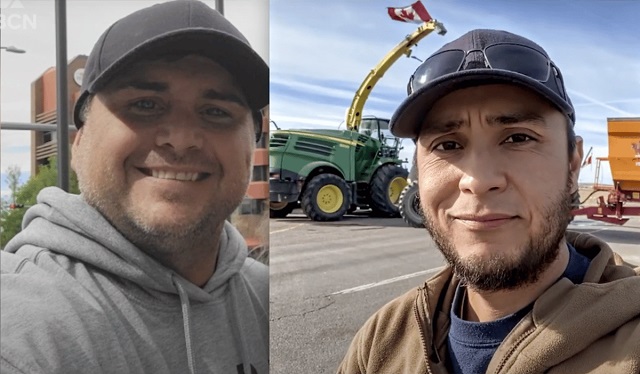
 Alberta1 day ago
Alberta1 day agoCOVID mandates protester in Canada released on bail after over 2 years in jail
-

 Business1 day ago
Business1 day agoCanada’s loyalty to globalism is bleeding our economy dry
-

 Crime1 day ago
Crime1 day agoProject Sleeping Giant: Inside the Chinese Mercantile Machine Linking Beijing’s Underground Banks and the Sinaloa Cartel
-

 Alberta1 day ago
Alberta1 day agoAlberta uncorks new rules for liquor and cannabis
-
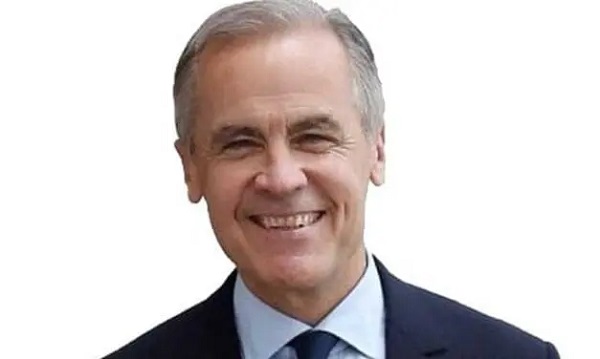
 Business1 day ago
Business1 day agoCarney’s spending makes Trudeau look like a cheapskate
-

 armed forces23 hours ago
armed forces23 hours agoCanada’s Military Can’t Be Fixed With Cash Alone




